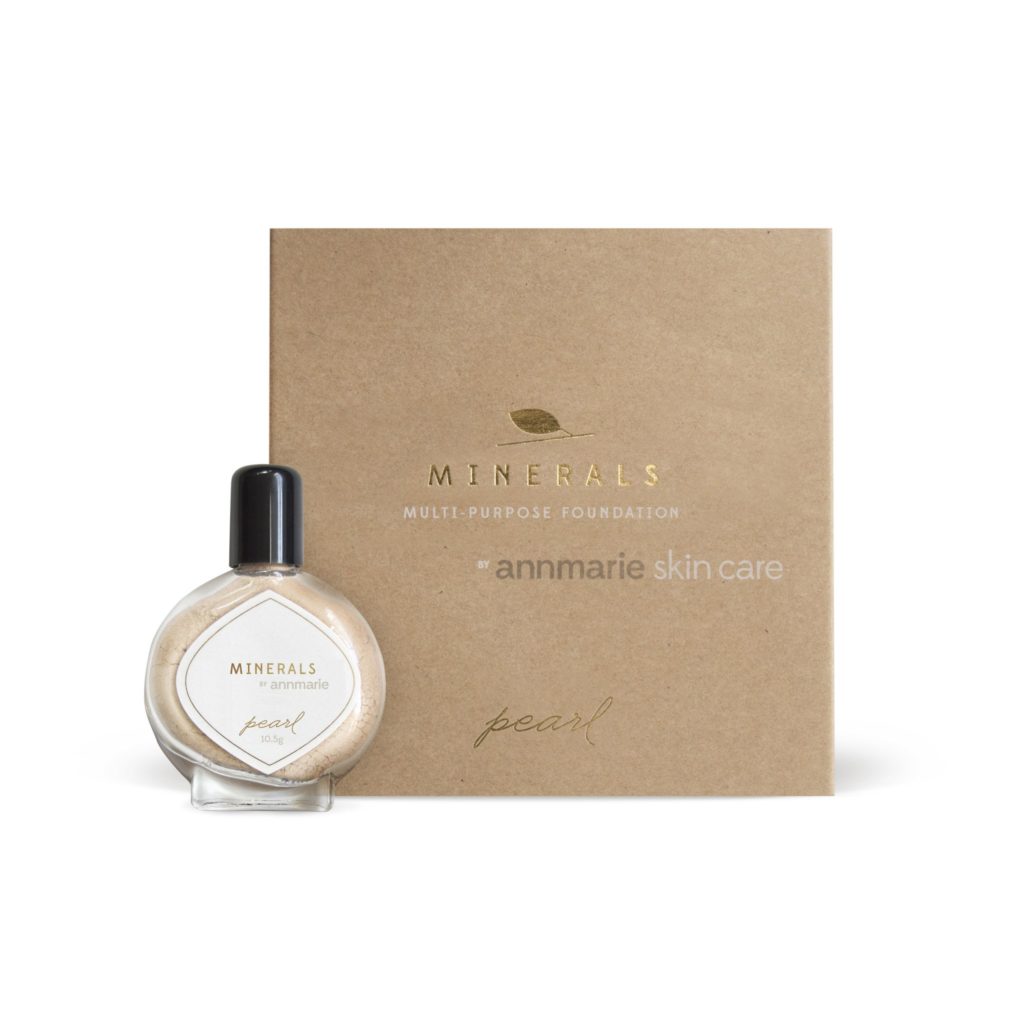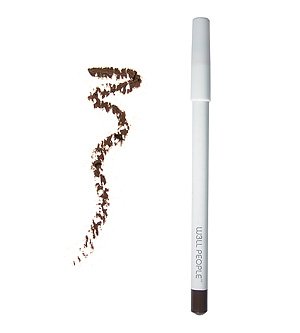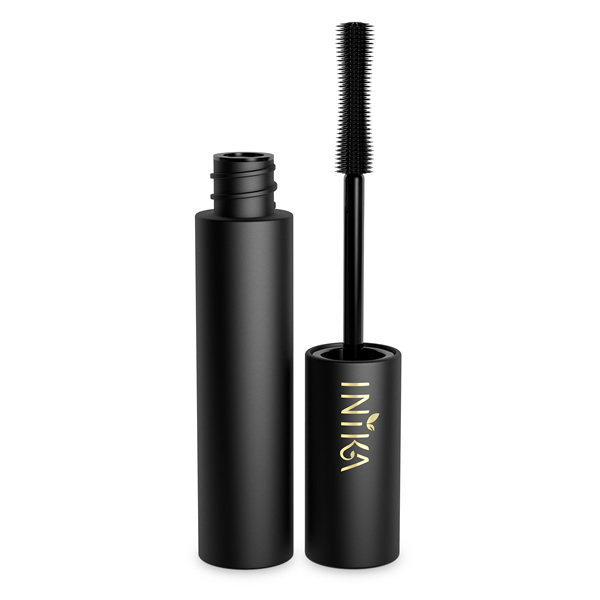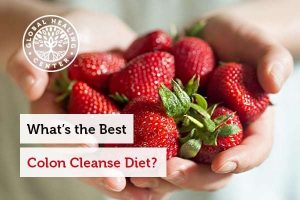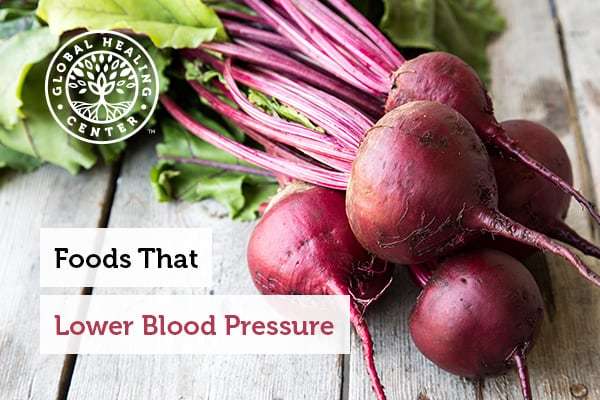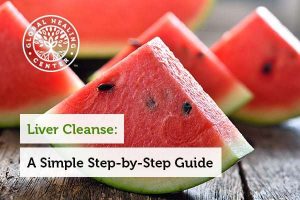
The liver is the human body’s largest internal organ and one of the most important for survival. Without it, bodily tissues would die from lack of nutrients and oxygen and the digestive process would not be able to take place. One of the liver’s most important functions is the removal of toxins from your system. This function is why cleansing your liver and living a healthy lifestyle is so crucial. Performing an organic liver cleanse can help remove toxic buildup for overall health and wellness. Before doing a liver cleanse, it is important to understand what the liver is and all of the necessary functions it performs.
The Liver’s Location & Design
Inside your body, the liver sits primarily on the right side. It spans across the top of the abdominal cavity, above your stomach and below your diaphragm, leaning down towards the right kidney. This vital organ is soft and rubbery with a reddish-brown color, weighs about three pounds, and contains one pint of blood at any given moment. It is triangular and consists of two primary lobes made up of 1,000 lobules. These tiny lobules contain small tubes that are connected to larger tubes which form the common hepatic duct. This duct is responsible for transporting bile made by the liver to the gallbladder and the first part of the small intestine known as the duodenum.[1]
Functions of the Liver
The importance of this organ is immense. The liver is responsible for essential activities beyond digestion and filtering toxins. The functions it performs on a daily basis warrant regular health maintenance and care.
Metabolism
The liver is the metabolic center of the body. Controlled by the central nervous system, the liver is responsible for the metabolization of macronutrients (fats, carbohydrates, and proteins). This metabolic process also produces free radicals that antioxidants scavenge to maintain the oxidative and antioxidative balance in the liver. Insulin and glucagon hormones are what drive the metabolic function of this organ.[2]
Production
The liver is responsible for the production of bile, proteins for blood plasma, glucose, and cholesterol. The bile your liver produces helps break down fats in the small intestine and take away waste. The proteins needed for blood plasma are also made in the liver and consist of fibrinogen, prothrombin, and albumins. The first two proteins are coagulation components that aid in the blood-clotting process, while albumins maintain the blood’s environment to keep blood cells at an even hydration level. The production of cholesterol and other proteins help transport fats throughout the body.
The liver helps keep your blood sugar levels even. It produces and distributes glucose depending on your body’s needs. When you eat, your liver holds onto sugar, or glucose, to use as fuel for a later time. If there is little to no sugar present in your body but your organs and red blood cells need it, your liver produces another kind of fuel called ketones derived from fats. A low level of insulin in your body is what triggers this process called ketogenesis.[1]
Storage
The liver acts as a storage unit holding your glucose supply, nutrients, minerals such as iron and copper, and vitamins A, D, E, K, and B-12. Many of these components are collected from blood passing through the hepatic duct. This function of the liver ensures that a constant supply of these essential nutrients will be provided to the body’s tissues when they need it.[3]
Immunity
The liver is part of the innate immune system, also known as the nonspecific immune system. This type of immune system provides immediate action against infection but does not generate long-lasting immunity to the organism, which is a trait the adaptive immune system carries. The innate immune system identifies an issue and deploys immune cells to the area in need of defense and repair. The liver’s primary immunity function is to identify and remove harmful toxins in the body. It also helps with the production of cells responsible for the activation of the adaptive immune system.[4, 5]
Digestion
It’s the production of bile that places the liver in yet another category—digestion. The cells responsible for this process, called hepatocytes, are found in the parenchymal tissue of the liver. They make up 70-85% of the liver’s mass.[6] Bile is passed through bile ducts and either stored in the gallbladder or released into the duodenum to help with digestion. It is comprised of cholesterol, water, bile salts, and a pigment called bilirubin. These components that make up bile help break down fats into fatty acids.[7]
Detoxification
The liver and kidneys are the main organs responsible for detoxification. The liver protects the body from toxic chemicals by cleaning blood and filtering out harmful chemicals in red blood cells. This process transforms these chemicals into compounds that can then be safely and efficiently removed from the body through urine.[8]
Signs of a Poorly Performing Liver
You are exposed to toxins every day. These toxins can come in the form of water, food preservatives, chemicals, pesticides, and electromagnetic radiation which can greatly affect the liver. There are several signs to look for regarding a troubled liver.[9]
- Tendency for the body to overheat resulting in excessive perspiration
- Difficulty digesting fatty foods
- Heartburn and acid reflux
- Inflammation of the liver
- The development of dark spots, commonly referred to as liver spots, on the skin
- New weight gain or the failure to lose weight even after lowering calorie intake
- Bloating in the abdomen
- Fat around the upper part of the abdomen
- Pain over or around the liver
- High blood pressure
- Fatigue
- High levels of triglycerides
- Mood swings and depression
- Sleep apnea
What Is a Liver Cleanse?
Sometimes referred to as a “liver detox,” a liver cleanse is a regulated diet over a period of four to five days with a “flush day” at the end. The objective of a liver cleanse is to reduce or eliminate toxins in the liver so that it can perform all of its functions more effectively.
Why Is a Liver Cleanse Necessary?
The liver is your filter for toxins. After a time it can become clogged with toxic residue, hindering its ability to keep your body free of these unhealthy components.
Think of the liver like the air conditioning filter in your house. You know it’s time to replace or clean it when it becomes dark and clogged. In this state, the filter can no longer keep your house clear of things like dust, pet dander, dirt, and toxins. Before the liver gets to a similar state, it’s time for it to be cleansed of the toxic residue that has built up over time. This will also give the liver time to heal itself.
Steps to Cleanse the Liver
To safely and efficiently detox the liver, try to eat healthy organic meals leading up to a cleanse. Avoid meat, fatty foods, and foods high in sodium such as processed foods. Following a liver cleanse diet lasts about five days and has two phases: the preparation for your liver’s flush (the first four days), and the purge itself on day five.
Following a healthy liver cleanse diet is crucial in the first days of your cleanse. Eat fresh, organic foods and drink purified or distilled water. You can may be able to enhance your water with a liver-supporting herbal blend, such as Livatrex®. Global Healing Center includes Livatrex in our Liver Cleanse Kit, a program that helps stimulate your liver and purge toxins.
A week before the cleanse you should rid your home of toxins, and eliminate products that contain chemicals like nail polish, hairspray, or other chemically produced beauty products. Stay away from alcohol before and after a cleanse, and consider eliminating alcohol from your life altogether. Consult a healthcare professional before undergoing a cleanse.[10]
Days 1-4: Foods to Avoid
There are several foods to avoid during a liver cleanse. Because the liver acts as a filter, only fresh, healthy organic foods are permissible to avoid added buildup and eradicate the liver of residual toxins. Foods to avoid during this time are:[11]
- Meat
- Dairy products
- Fried foods
- Processed foods
- Frozen foods
- Heavy sauces
- Condiments
- Pastries
- Spicy foods
- Soda, energy drinks, caffeinated beverages, and tap water
- Tobacco products
- Alcohol
Days 1-4: Foods to Embrace
In order to support a healthy liver cleanse, there are specific liver-friendly foods that can aid in digestion and promote a healthy evacuation of toxins from your body. These foods contain vitamins and minerals, namely potassium, that are linked to healthy liver function.[12]
- Fruits
- Vegetables (preferably eaten raw)
- Nuts
- Seeds
- Foods high in potassium
- Water (only distilled, purified, or fluoride-free)
- Fresh, natural juices
- Herbal teas (non-caffeinated)
Recipes
A healthy liver cleanse should involve homemade meals using only fresh, organic ingredients. Try using these recipes when undergoing a detoxification process.
Dr. Group’s Liver Cleanse Soup
Instructions and ingredients for a healthy liver cleanse soup:
- 1 organic beet
- 2 organic carrots
- 1 cup broccoli
- 10 organic garlic cloves
- ½ organic onion
- ¼ organic lemon
- 2 bay leaves
- 1 tablespoon Himalayan crystal salt
Wash the vegetables and finely chop the ingredients to your preferred consistency. Pour 32 ounces of distilled or purified water into a soup pot and add all ingredients. Bring to a boil, reduce heat, and then simmer on low heat for one hour.
Dr. Group’s Liver Cleanse Juice
To alternate meals during your cleanse week, try a blended drink:
- 3 organic carrots (washed and peeled)
- 2 organic apples (washed and cut)
- 1 organic beet (washed and peeled)
- 6 organic kale leaves
- ½ organic lemon (washed and peeled)
- ½ inch ginger root
Blend until the desired consistency is reached.
Days 1-4: Meals
Instead of three large meals, eat five small portions per day (this includes two snacks). Chew your food thoroughly and eat at a slow pace to ensure proper digestion. Drink only distilled water. To enhance flavor and nutrition, you can mix two tablespoons of raw organic apple cider vinegar (ACV) to one gallon of distilled water. Shake and refrigerate. You can prepare this in the morning and enjoy it throughout the day.
Breakfast
Start each morning with an eight-ounce glass of the ACV and water mix accompanied by a small bowl of fresh fruit. Choose only one fruit for this meal. Some of the better choices are:
- Watermelon
- Papaya
- Kiwi
- Plums
- Pears
- Apples
- Cherries
- Figs
- Grapefruit
Snacks
To break up the day and get more nutrients into your system while on a cleanse, eat a handful of nuts or seeds and wash it down with 12 ounces of your ACV/water mix. Choose only one type of nut or seed. Good choices include:[13]
- Sunflower seeds
- Pumpkin seeds
- Walnuts
- Brazil nuts
- Almonds
Natural supplements consisting of herbs and spices like turmeric, milk thistle, dandelion, and cinnamon are a great way to add more nutrients and flavor to meals while maintaining a healthy liver detoxification.[13]
Breakfast
Around 8:00 a.m. to 10:00 a.m, choose one fruit, chop it into a bowl and eat for breakfast. Make sure to eat only one selected fruit. Watermelon is a great choice due to its water and fiber content. Enjoy your meal with eight-ounce glass of the ACV/water mix.
Lunch
Around noon, have the liver cleanse soup or the liver cleanse juice. The soup is ideal for flush day, as the leftovers will be a nourishing lunch for the day after the cleanse.
Dinner
As an afternoon snack or your dinner around 4:00 pm choose either a handful of walnuts, an avocado with lemon and sea salt, or fast through the afternoon with just the ACV/water mix.
The Flush
To prepare for the flushing process on day five, you will be ingesting water, Epsom salt, and olive oil over a period of about two hours.
Around 7:00 pm, mix one tablespoon of Epsom Salt in eight ounces of warm purified water and drink it quickly. You may experience liquid stools within 20 minutes after ingestion, so it is advisable to be near a bathroom.
Between 8:30 and 9:00 pm, drink ¾ cup of organic cold pressed extra virgin olive oil. A small amount, about two tablespoons, of freshly squeezed orange, grapefruit, or lemon juice may be added to improve taste. It is important to drink all six ounces. There are a few ways to ingest the oil to make it easier to go down:
- Thicken the oil by refrigerating it for a few hours
- Using a jar, pour ½ cup of orange or grapefruit juice into the oil and shake until thin
- Split into two cups with juice in one and oil in the other and drink through a straw alternating between the two
Sleep Preparation
Immediately after drinking the oil, go to bed and lie on your right side with your knees pulled up to your stomach for 30 minutes. After this step, you can stretch out and go to sleep. Cramping can occur, which is a sign the purge of toxins is working. Walking around for ten minutes followed by another attempt at sleep should help. Nausea can be another common side effect due to the release of toxins from the liver. Be sure to vomit if necessary. This nauseous result is a sign that your body may be in need of another cleanse.[12, 13]
The Day After
The day after completing the cleanse, consider doing a natural water enema or taking six Oxy-PowderⓇ capsules immediately after waking up to naturally flush the stones that have been released from the liver and gallbladder. If you’re curious as to how many stones you’ve released, buy an inexpensive colander and place it over the toilet to collect these stones. Afterwards, rinse thoroughly in the sink to see how many stones you’ve passed.
Breakfast should consist of fruit, followed by the remaining liver cleanse soup for lunch, and a healthy dinner of salad and a light protein. Make sure to drink distilled or purified water with fresh lemon.[13]
What to Expect During a Cleanse
Liver cleanses are different for many people, but a lack of energy and an emotional response can occur, especially once the cleanse is completed. Some people may also notice a few issues with their skin, along with an overall feeling of sickness during and after the cleanse. These conditions will improve over a short period. A week or so after a cleanse, many people experienced higher energy levels, better digestion, and an overall feeling of wellness. Again, consult your healthcare provider before starting a liver cleanse. [14]
Top Liver Cleanse Benefits
Many people don’t realize the impact an unclean liver can have on their daily performance, energy levels, and even appearance. The accumulation of different toxins is taxing on the liver. These toxins are lumped into two categories: exogenous toxins and endogenous toxins. Exogenous toxins are comprised of anything that originates outside of the body including toxins found in food, water, and air. Endogenous toxins are a normal byproduct of your body resulting from cellular metabolism. Performing a liver cleanse to remove these toxins can affect the overall wellness and health of your entire body.[15]
Improves Your Outward Appearance
An unhealthy outward appearance can show what’s going on inside of your body. Detoxifying your liver may help to boost your immune system and enable much-needed nutrients to reach destinations that help with cell regeneration. Once your inside is refreshed, your outside will reflect that and may reduce the appearance of age by as much as five to ten years.
Promotes Healthy Weight
Weight loss can be one of the results of a liver cleanse. When the liver becomes blocked due to high toxicity levels, it isn’t able to perform two of its key functions—bile production and metabolism. Cleaning this organ encourages healthier functioning making it easier for the liver to break down fats and produce bile.
Boosts Overall Vitality
Fatigue, sleep apnea, and sluggishness can be linked to an unhealthy diet and unclean liver. Flushing your body of toxins through a cleanse enables the body to receive the nutrient byproducts produced by the liver. These nutrients will have a marked effect on your energy levels as well as an overall feeling of wellness.
Helps Curb Liver Stones
The kidneys and gallbladder aren’t the only organs to produce stones; your liver can achieve this as well. These stones are similar to gallstones with the exception of location, and form due to high cholesterol levels. When too much cholesterol is present in the body, excess amounts may crystallize into lumps resembling tiny pebbles. These stones, stored in the liver, can considerably affect liver function. Performing a cleanse may help flush these unwanted stones out of your system, supporting a more productive liver.
Supports the Immune System
The liver’s role as part of your immune system can be compromised as a result of residual toxins. Cleaning these toxins from your liver will give your immune system a boost by affecting your liver’s ability to address infection and identify toxins in the blood.
How Often to Do a Cleanse
The number of times you choose to perform a liver cleanse is up to you. Experts recommend a full cleanse two or three times a year. Always consult a trusted healthcare professional before beginning any cleanse. However, some people perform this process several times with five to 10-day intervals to feel a more profound result. To start your cleanse, try the Liver Cleanse Kit. This all-natural, multi-tiered program uses the power of Livatrex to kickstart your liver’s natural cleansing abilities, and Oxy-Powder to facilitate toxin removal.
Your Story
Have you ever done a liver cleanse? Are you thinking about trying one? We’d love to hear your story. Please tell us about your experience in the comments section below.
The post Liver Cleanse: A Simple Step-by-Step Guide appeared first on Dr. Group's Healthy Living Articles.
source
https://www.globalhealingcenter.com/natural-health/liver-cleanse-a-simple-step-by-step-guide/

